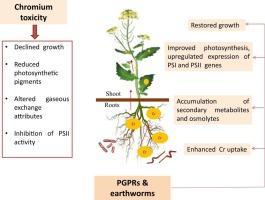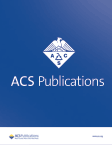联合施用蚯蚓和植物生长促进根瘤菌可提高芸苔属植物在铬金属毒性条件下的金属吸收、光合效率并调节次生代谢物水平
IF 2.9
Q2 PUBLIC, ENVIRONMENTAL & OCCUPATIONAL HEALTH
引用次数: 0
摘要
铬(Cr)毒性会损害植物的基本形态和代谢活动。本研究旨在评估促进植物生长的根瘤菌株,即铜绿假单胞菌(M1)、伯克霍尔德氏菌(M2)和蚯蚓(Eisenia fetida)在减轻 10 天大的甘蓝(Brassica juncea L)的铬毒性中的有益作用。补充根瘤菌群改良剂后,铬对光合特性的影响得以恢复。在施用蚯蚓和 PGPR 的同时,气体交换属性、PS II 的效率、总酚、花青素和类黄酮的含量都得到了提高。对初级光合色素(叶绿素)、辅助光合色素(类胡萝卜素)和总酚的共焦成像显示,蚯蚓和两种微生物菌株(M1M2)联合接种后荧光最大。基因表达分析表明,Cr 胁迫下的幼苗中,叶绿素合成酶(PSY)、光系统 II 核心蛋白 psb A 和 psb B 受到下调,而在补充蚯蚓和 PGPR 后,它们受到上调。此外,加入蚯蚓和 PGPR 后,苯丙氨酸氨酰化酶(PAL)和查尔酮合成酶(CHS)也得到了上调。加入 PGPR 和蚯蚓后,一氧化氮含量增加,硝酸还原酶(NR)基因的活性增强并上调。本文章由计算机程序翻译,如有差异,请以英文原文为准。

Combined application of earthworms and plant growth promoting rhizobacteria improve metal uptake, photosynthetic efficiency and modulate secondary metabolites levels under chromium metal toxicity in Brassica juncea L
Chromium (Cr) toxicity impairs essential morphological and metabolic activities in plants. The present investigation was carried out to evaluate the beneficial role of plant growth promoting rhizobacterial strains namely Pseudomonas aeruginosa (M1), Burkholderia gladioli (M2) and earthworms (Eisenia fetida) in alleviating Cr toxicity in 10 days old Brassica juncea L. The findings delineated that addition of earthworms and PGPR restored growth, boosted Cr uptake and showed upregulation of metal transporter genes (SULTR 1-4). Supplementation of rhizospheric amendments reinstated Cr induced impairment in photosynthetic attributes. Gaseous exchange attributes, the efficiency of PS II, the content of total phenols, anthocyanin and flavonoids was enhanced with application of earthworms along with PGPR. Confocal imaging of primary photosynthetic pigment (chlorophyll), accessory photosynthetic pigment (carotenoids) and total phenols showed maximum fluorescence with combined inoculation of earthworms and both microbial strains (M1M2). The gene expression analysis revealed that Phyotene synthase (PSY), Photosystem II core protein psb A, psb B were down regulated in Cr stressed seedlings which upon supplementation with earthworms and PGPR were upregulated. Further, Phenylalanine ammonialyase (PAL), chalcone synthase (CHS) were upregulated with addition of earthworms and PGPR. Increased nitric oxide content, enhanced activity and upregulation of nitrate reductase (NR) gene was observed with addition of PGPR and earthworms
求助全文
通过发布文献求助,成功后即可免费获取论文全文。
去求助
来源期刊

ACS Chemical Health & Safety
PUBLIC, ENVIRONMENTAL & OCCUPATIONAL HEALTH-
CiteScore
3.10
自引率
20.00%
发文量
63
期刊介绍:
The Journal of Chemical Health and Safety focuses on news, information, and ideas relating to issues and advances in chemical health and safety. The Journal of Chemical Health and Safety covers up-to-the minute, in-depth views of safety issues ranging from OSHA and EPA regulations to the safe handling of hazardous waste, from the latest innovations in effective chemical hygiene practices to the courts'' most recent rulings on safety-related lawsuits. The Journal of Chemical Health and Safety presents real-world information that health, safety and environmental professionals and others responsible for the safety of their workplaces can put to use right away, identifying potential and developing safety concerns before they do real harm.
 求助内容:
求助内容: 应助结果提醒方式:
应助结果提醒方式:


